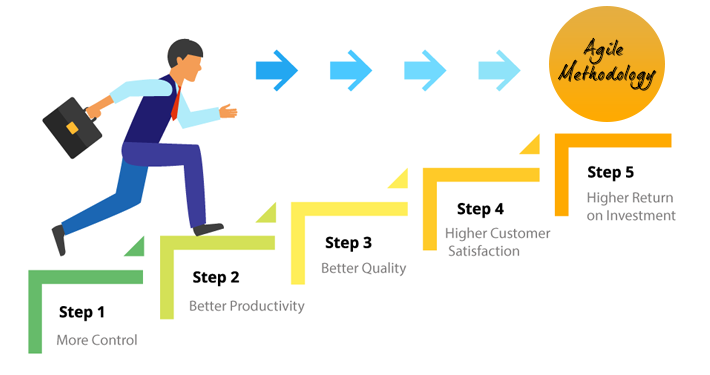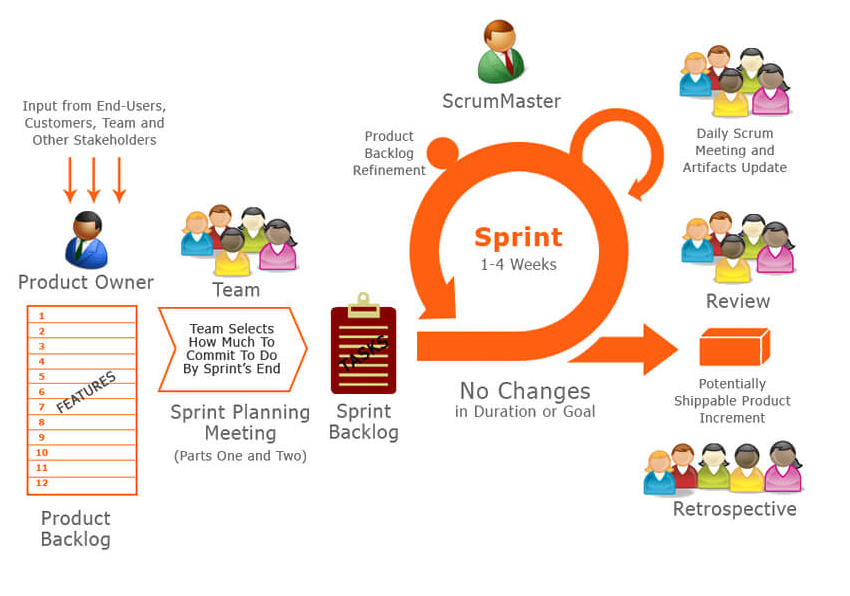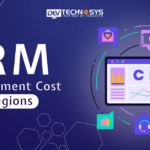The most significant development in agile was started in the 90s. We can say it according to rule the rejection of an earlier establishment with a waterfall or V model.
This older method significantly gained application because of missing deadlines, going over the complete budget failure. In such cases, agile methodology significantly helped the Software development company offering plenty of services.
The agile methodology also made sure that all such instances remain a thing of the past and provided considerable benefits to the platform than it could deliver.
Even after this, it is important to know the strengths and weaknesses of any Software development services prior to the development because risk gets reduced with significant preparedness and awareness.
In this article, we will develop an understanding of some prominent agile methods along with their individual characteristics and offerings.
What is an agile methodology?
Agile methodology refers to a people-focused and result-focused approach in any Software development company that also considered the rapidly changing technology in the world.
This methodology is also centered on reliable and adaptive planning, self-organization, minimal delivery times and various other factors.

It can be said that this technology is flexible, instant, and it also aims for uninterrupted improvisations in quality using some popular tools like Scrum and Extreme Programming.
Agile is a practice that highly promotes continuous iteration and testing throughout the development project life cycle. It is worth noticing that the development or testing activities are concurrent Software development services, unlike the traditional waterfall method.
The agile methodology entirely focus on some core values which are as follows-
- The interactions of the team and individuals over the software development process and tools
- Working software in Custom software development company over any comprehensive documentation
- Customer collaboration proficiently over the contract negotiation
- Response to any modification following the plan
Usually, it works by admitting the traditional waterfall method in Software development methodology to be a desired one. The process also follows through planning, designing, building, testing, and various such instances.
For many business platforms where factors like hardware, competition or requirements are changing the variables agile Technology creates a fine line between the processes.
Agile methodology notes the readiness for motion, nimbleness, and dexterity motion in any Custom software development company offering a solution for the business community asking for simple and lightweight solutions along with a quick software development process.
It is specific in the rapidly growing internet and software industry along with the emerging mobile application development segment. The new agile methodology has also raised a substantial amount of stir in such platforms.
What is the role of agile methodologies?
In general, the methodology can be said as a particular set of conventions that any team agrees to follow up on. This also means that every team is ready to have their own methodology which may be in small or large surveys different from every other team’s process and methodology.
Similarly, in Software development methodology agile methodology refers to the convention take any team has agreed to follow in a way that they also follow its rules and principles.

Agile Software Development methodologies have powerful development techniques that enable software development with various iterative development techniques.
This methodology also works on the functioning of the continued evolution of the needs and solutions that usually occur during the collaboration between the functional team and the self-organization team.
This method encourages organized project management for a well-managed process allowing the recurrent inspection with ease. It also helps in the revision of tasks providing scope to easily adopt the best practices and insist on high-quality products only.
Basically there are number of agile methodologies are available but some of the common ones are as follows-
- Scrum
- Lean
- Kanban
- Extreme programming (XP)
- Crystal
- Dynamic systems development method DSDM
- Feature-driven development FDD
Scrum
Scrum is a lightweight project management framework that is in itself an excellent tool in any Software development company not only helps to manage and control the iterative projects but also works on the incremental phase.
Considering its simplicity and demonstrated efficiency this framework also acts as a reliable wrapper for various engineering products. It has also successfully won a large clientele base in the market demonstrating the scale of various groups crosswise over the expanded associations.
Lean
Lean was developed by Tom and Mary Poppendieck as an iterative software development methodology going a lot to its standards and extreme practices to Lean enterprise development and other such organizations like Toyota etc.
These Software development services work on the below-mentioned principles-
- Elimination of the waste
- Intensifying the learning process
- Selecting as late as permissible
- Strengthening the core values of the team
- Building integrity
- Seeing the entire process
Lean software development methodology underscores the productivity and speed for any improvisation in the work process and it depends upon the solid input amongst various technicians and clients.
It also focuses on the overall effectiveness of any Custom software development company’s group assets and attempts to ensure that everybody remains gainful.
Kanban
Kanban is a powerful Software development methodology used by many enterprises that only focus the continuous delivery without any overheads or burdens to the development team. Just like scrum, it is also a procedure that intends to enable various teams to cooperate in a successful manner.
It works on three basic principles which include-
- The workflow for any day i.e. seeing every specific item is informative in context to any other
- To limit the amount of work in progress and defining the expected time limit for work delivery from every team members prospect under any time frame
- To enhance the workflow that is take up the next coming things on priority in backlog once the recent task is done.
Extreme programming (XP)
The extreme programming was originally written by Kent Beck and it has risen various stand out among the Software development services and disputable agile methodology. This framework is a disciplined form of delivering high-quality software products and advances the client association.
Its benefits are not only limited to this rather it also provides rapid feedback loops, nonstop planning, close collaboration in order to deliver the software products frequently, ceaseless testing and so on. The first XP framework depends on a few basic principles which include simplicity, criticism, communication, and mettle.
XP also has 12 supporting practices including planning the game, minor releases, customer acceptance testing, pair programming, simple designing, test-driven development, continuous integration, refactoring, collective code ownership, metaphor, coding standards, and sustainable pace. All of these factors are crucial for any Custom software development company.
Crystal
Crystal as a Software Development methodology stands out amongst all the other versatile and lightweight software development ways. Compared to other child methodologies like crystal yellow, crystal orange, crystal clear and so on this one is exceptional and it is driven by advertising the factors like undertaking requirements, framework criticality, and group estimate.
Just like any other Software development methodology crystal framework also focuses on early product delivery maintaining the timelines and high client association. It also considers the versatility and eradication of distractions in any project.
Dynamic systems development method DSDM
The dynamic systems development method was formulated in the year 1994 and it was developed to meet the requirements of delivering any standard industry project framework.
This has a dynamic role in a Software development company and has an advanced level of development into tools and also acts as a foundation for various processes like planning, managing, scaling or executing the agile processes and other iterative development projects.
This framework depends upon the 9 core rules that include the business requirements, dynamic client association, visit conveyance, enabled groups, coordinator testing, and Partner Corporation.
The entire focus of DSDM of this framework is upon delivering the final software product that can ensure that it is fit to meet all the business requirements.
Using this methodology in Software development services one can complete the critical work projects easily. It is important here to include a few less important tasks in every time box so that it can be easily replaced with high priority projects whenever required.
Feature-driven development FDD
Feature-driven development was developed and articulated by Jeff De Luca and as a feature-driven development in the Software development company, FDD refers to a client-centric and programmatic software development process.
As the name itself indicates it has various features like use cases that are utilized in the rational unified process. It is driven on the basis of the model and it has a short duration process that starts by setting in overall shape followed by a sequence of 2 weeks i.e. design by feature and built by feature iterations.
It follows 8 key principles which made the entire software development process and this are-
- Domain object modeling
- Developing by feature
- Class ownership
- Feature teams
- Inspections
- Configuration management
- Regular builds
- Visibility of the progression and results
This framework specifies every task that needs to be attained by any Software development company and enables significant work management to calculate the product delivery based upon the accomplished task.
Benefits of agile software development methodologies
The benefits of agile methodologies are not limited just to customers, development teams and other involved organizations but it has a wide range of coverage for almost all of the functions. The outlines of its advantages are as follows-
- Customer
- Development team
- ScrumMaster
- Vendor
- C level executives
- Product managers
Customer
Most of the customers prefer vendors because of their responsiveness to the development projects. Agile software development methodology provides a number of benefits to the customers like high-value features and efficiency by offering-
- More responsiveness to the request
- High-value features
- Quick delivery with short cycles
Development team
Team members undoubtedly enjoy the work and like to see its utility value. For any software development project, its team plays a crucial role an agile can provide them with-
- Work is highly valued and utilized
- Teams can enjoy the development of working
- Nonproductive work gets automatically reduced
ScrumMaster
The benefits involved in this segment are-
- Planning at every task level and tracking the regular meetings.
- A tremendous amount of awareness for the project status.
- Address in solving the issues instantly.
Vendor
Vendors are capable to reduce the wastage buy entirely focusing on high-value features and reducing corresponding to the waterfall method because of its decrease overhead and increase efficiency. Agile methodology improves the customer satisfaction rate translating better customer retention and references. The benefits to vendors are-
- Focused development having high-value features
- Increased efficiency
- The decrease in waste or overheads
C level executives
Agile methodology provides maximum visibility in the development of projects on a regular basis. This can be used by the enterprises in order to plan more efficiently and adjust their strategy accordingly based upon the available information and less on speculation. The advantages in this segment are-
- Maximum visibility on a regular project development cycle
- Effective planning
Product managers
Product managers are those who typically complete the responsibility for making the users satisfied in Software development methodology and make sure that the work is aligned with their requirements.
The agile methodology makes it easier to provide frequent changes in order to reprioritize the work and to ensure that maximum value is provided to the users. The benefits in this segment are-
- Aligned work as per the requirement of the user.
- Frequent opportunities considering the work.
- Maximum delivery of the value.
Conclusion
The fundamental aim of agile Software development methodology is to make sure that high-quality software service and products are delivered within the stipulated time limits. Hence it is not important that whichever methodology you indulge- in, the priority must remain to deliver superior quality software products.


























